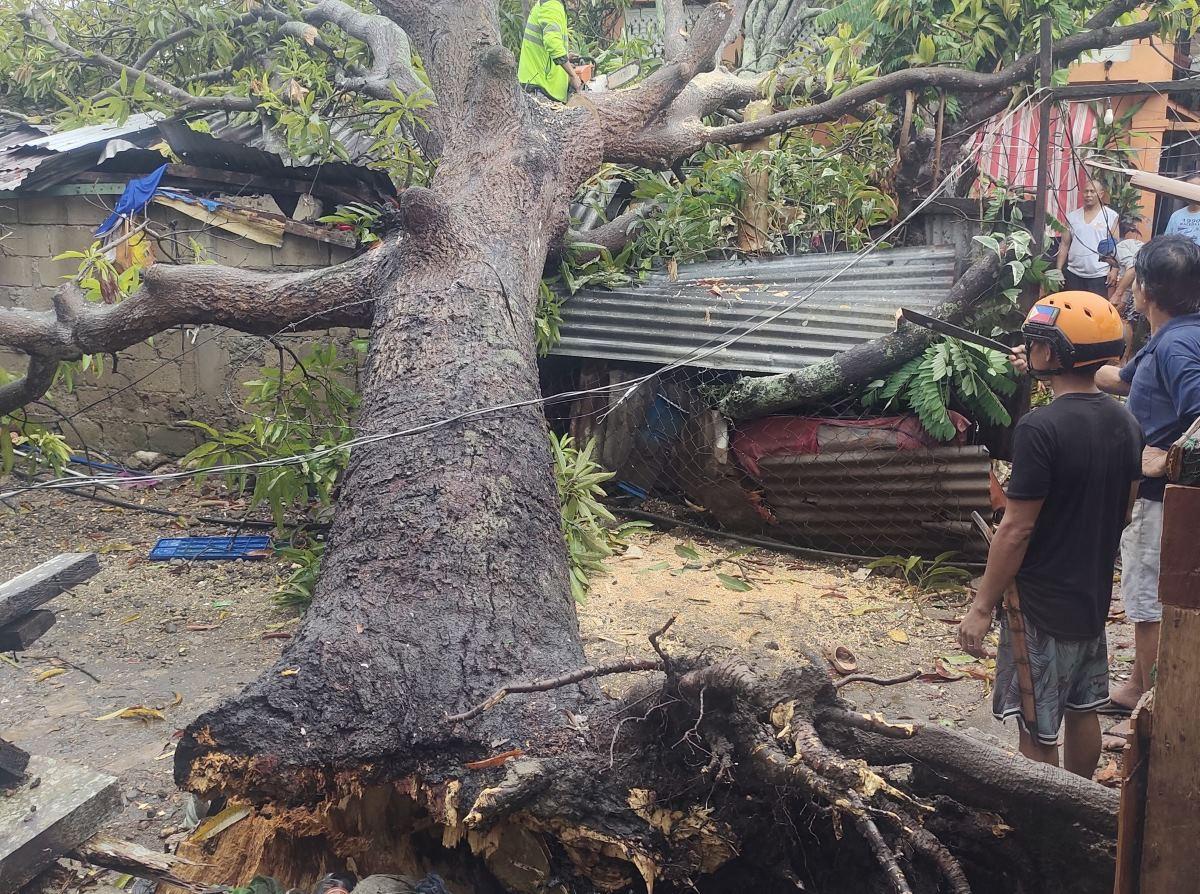PAGASA: 13 to 18 tropical cyclones may enter PH in 2024

Around 13 to 18 tropical cyclones are expected enter the Philippines in 2024 as the country entered the rainy season, PAGASA said Thursday.
The state weather bureau noted that there were only 11 tropical cyclones that struck the country last year due to the El Niño phenomenon.
“Ngayong taon po na ito, according to our projections, ang inaasahan po natin ay about 13 to 18. So mas mababa pa rin ito sa average na 19 to 20, subalit ngayon nga po ay nakaisa na tayo,” said PAGASA Deputy Administrator for Research and Development Marcelino Villafuerte II in a public briefing.
(For this year, according to our projections, we are expecting about 13 to 18. So this is still fewer than the average of 19 to 20, but we have already experienced one.)
The country recently experienced its first tropical cyclone this year, Typhoon Aghon, which left seven people dead.
A total of 51,858 people or 16,404 families were also affected by Aghon, according to the National Disaster Risk Reduction and Management Council.
The typhoon left agricultural damage worth P21,651,548, affecting 369 farmers and fisherfolk.
1 or 2 tropical cyclones in June
Meanwhile, one or two tropical cyclones may enter the Philippine Area of Responsibility in June.
“Actually, ngayong May, ineexpect natin one or two [tropical cyclones]… then next month, by June ay one or two din. Ito ay paparami as we approach August and September,” PAGASA weather specialist John Manalo said in an interview with GMA News Online.
(Actually, this May, we expect one or two [tropical cyclones]… then next month, by June, will be one or two as well. This will increase as we approach August and September.)
PAGASA reiterated that the La Niña phenomenon, which is associated with above-normal rainfall conditions, is expected in the last quarter of the year.“Papatapos pa lang yung El Niño natin and then in the coming months we are expecting na magta-transition siya into a neutral phase, so ibig sabihin walang El Niño and then walang La Niña,” Villafuerte explained.
(The El Niño phenomenon is just about to end and then in the coming months we are expecting to transition into a neutral phase, which means that there will be no El Niño and La Niña.)
“And then by around July, August, September about 69% yung chance na possibly magsimula na po yung La Niña. So yung La Niña po usually peaks around the end of the year and then until the following season, next year, yung at least first quarter.”
(And then by around July, August, September, there is a 69% possibility that the La Niña would start. So the La Niña usually peaks around the end of the year and then until the following season, next year, at least the first quarter.)
PAGASA on Wednesday officially declared the onset of rainy season in the country.
But PAGASA said there may be breaks in rainfall that extend over a few days or weeks.
“Of course, meron din tayong tinatawag na monsoon break… Madalas kasi sa Luzon yung nakakaapekto noon. May pagtigil dun sa, sinasabi natin na mga rainy season or mga pag ulan na ineexpect natin. May konting break siya na tumatagal ng at least three days ‘to, or more,” Manalo said.
(Of course, we also have something called the monsoon break… This usually affects Luzon. There would be a halt to the rain. There’s a slight break that lasts at least three days or more.) —Vince Angelo Ferreras and Jiselle Anne Casucian/RF/VBL, GMA Integrated News





